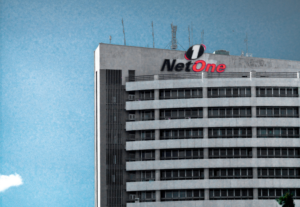ZIMBABWE’S CURRENCY CRISIS: THE TRUTH BEHIND THE NUMBERS

Zimbabwe’s economy is facing a serious challenge, with inflation rising fast despite the government’s claims. The local currency, called ZiG, was introduced in April, but it has already lost more than 49% of its value. Government officials say the currency has brought stability, but many people do not agree. The prices of basic goods keep going up, and it is becoming harder for people to make ends meet.
The government says inflation for August is only 3.7%, but independent economists disagree. They say inflation is actually 858%. This large gap between what the government says and what experts are reporting shows a problem. People are starting to wonder if the government is telling the truth about the economy. While officials claim that prices are stable, everyday shoppers know this is not the case. Prices are rising at a fast rate.
One of the most common products in Zimbabwe, a juice called Mazowe, is a good example. In February, it cost US$3. By the middle of the year, it had increased to US$5.10. Now, the same product costs US$7.20. This is more than double what it was just a few months ago, yet people’s salaries are not going up. For many families, it is becoming impossible to afford such basic items.
This problem is not just with Mazowe. Many other products that people use every day are also getting more expensive. At the same time, the Zimbabwean currency is losing value, especially when compared to the US dollar. The official exchange rate is US$1 to ZiG 13.8, but on the black market, it is now US$1 to ZiG 30. This difference in exchange rates is making the situation worse, and people are losing confidence in the ZiG currency.
The ZiG currency was introduced to fix problems with the old Zimbabwean dollar, which was abandoned earlier this year. Since independence in 1980, Zimbabwe has had at least six different versions of its currency. However, the new ZiG currency has not solved the issues. Instead, it has caused more confusion and volatility in the market.
Despite the challenges, government officials continue to claim that the currency is strong and backed by foreign reserves. They say that the economy is doing well because of these reserves, and that there is no need to worry. In his most recent speech, the governor of the Reserve Bank of Zimbabwe, John Mushayavanhu, said that inflation is under control and that the economy is stable. He pointed to the month-to-month inflation rates, which he said were low or even negative for most of the year.
The Reserve Bank governor also said that foreign currency reserves have grown by 9.5% in the first half of 2024, compared to the same period in 2023. According to him, this has helped the country’s balance of payments and will continue to support the exchange rate. He also said that the banking system is safe and that the conditions in the economy are good for growth. The government is even predicting that the economy will grow by 2% in 2024.
However, people in Zimbabwe are experiencing a different reality. While the government talks about growth, the average person is struggling with rising prices and a weak currency. Many people are losing faith in the ZiG currency because it has already lost nearly half of its value. On the streets, the situation feels more like a crisis than a stable economy. Prices are rising every day, and the currency keeps getting weaker.
Zimbabwe has been through many economic crises before, but this one feels different to many. The gap between the official statements and what is happening in real life is growing larger. As people deal with higher prices and a currency that does not hold value, it becomes harder to believe that things will get better soon.
The government says that everything is under control, but for many, the situation is only getting worse. The ZiG currency was supposed to bring stability, but instead, it has brought more uncertainty. Now, the question is, how long can this continue before a new solution is needed? Only time will tell.





This piece provides a clear view of how the Zimbabwean economy is struggling, despite what the government claims. The real-life example of Mazowe juice perfectly illustrates how rising prices are impacting ordinary citizens. It’s a strong reminder of how disconnected government officials can be from the realities on the ground. The gap between what the government reports and what independent economists are saying is alarming. It’s important for people to know the real story, and you’ve done a great job highlighting that.
This seems like just another piece that criticizes the government without fully considering the complexities of the situation. The economy is difficult to manage, and while inflation is a problem, the article could be more balanced by mentioning the government’s attempts to strengthen foreign reserves and predict growth.
I really appreciate how this piece captures the struggles of everyday people in Zimbabwe. The rising prices of basic goods like Mazowe juice are things that everyone can relate to. It’s clear that this currency isn’t working, and the article paints a realistic picture of the challenges Zimbabwe is facing.
This piece focuses too much on the negative side of things. While it’s true that there are economic challenges, the government’s efforts to increase foreign reserves and stabilize the currency should be given more attention. It’s not all doom and gloom.